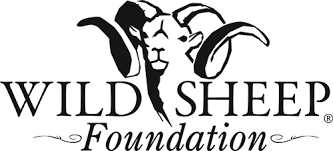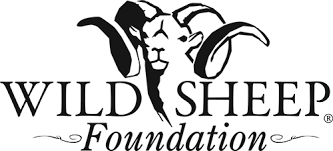WSF: Promising Bighorn Testing in Nebraska
Bozeman, Montana- In mid-February, the Nebraska Game & Parks Commission (NGPC) successfully captured, took biological samples from, collared, and released 36 bighorn sheep on-site in the Wildcat Hills as the second part of a two-phase project to enhance the state’s bighorn sheep population. The project was funded in part by the Wild Sheep Foundation (WSF), its Chapters and Affiliates, and other conservation partners.
“This capture was mostly about disease-testing protocols and new options to test, and hopefully get, rapid results in the field,” said Kevin Hurley, WSF’s VP for Conservation. “The biological samples collected were used to compare three different disease-testing methods against each other, to improve the overall speed and reliability of testing, something all WSF’s agency partners can use going forward.”
Biological samples were gathered, including nasal swabs, which were overnighted to the Washington Animal Disease Diagnostic Laboratory (WADDL) in Pullman, WA. WADDL is considered the “gold standard” diagnostic lab for testing for the bacteria Mycoplasma ovipneumoniae (Movi), which can lead to fatal pneumonia in wild sheep. Also on hand was a new Biomeme animal-side test, which takes only an hour to return results. And, for the first time in a field application, dogs trained to detect Movi by sniffing either fecal pellets or nasal swabs from bighorn sheep were on hand as a third test. These dogs are part of a promising new program with Working Dogs for Conservation based out of Missoula, MT, which WSF also supports with conservation grants.
Nebraska was once home to abundant bighorn sheep populations. By all accounts, bighorns were gone by the early 1900s. Repopulating the Cornhusker State began in 1981 by translocating surplus bighorn sheep from other states. Today, the estimated population is approximately 250 bighorn sheep.
Historically and today, loss of wild sheep has often occurred via respiratory pneumonia, frequently traced to pathogen transfer from domestic to wild sheep.
“It was a great opportunity for all of us involved to evaluate these new disease testing methods,” said Todd Nordeen, NGPC Big Game Disease & Research Program Manager. “Considering all the logistics and preparations leading into the event, I felt it went very well. This was in large part due to all the expertise, professionals, and conservation organizations that contributed to this effort. The ability to get disease results much sooner allowed us to respond with more immediate management decisions”
WSF facilitated raising $160,200 to purchase the GPS tracking collars for a September 2022 initial capture. Iowa FNAWS contributed $50,000 to this project. Partners making $25,000 donations included Grizzly Outdoor Corps of Winston-Salem, NC, and the Gilchrist Foundation of Sioux City, IA. A dozen WSF Chapters and Affiliates each pledged $5,000, including Utah WSF, Midwest WSF, Washington WSF, Arizona Desert Bighorn Sheep Society, Montana WSF, Texas Bighorn Society, Wild Sheep Society of BC, Oregon WSF, Alaska WSF, New Mexico WSF, California WSF, and Idaho WSF. Karen Gordon of Alaska also individually contributed $200.
“This recent Nebraska capture and sampling effort continued to improve not only the efficacy of field- vs. laboratory-testing options, but also assisted bighorn sheep managers who often have to make somewhat quick decisions in the field,” added Hurley. “In this instance, based on combing lab/field diagnostic results, NGPC managers made the decision to release these captured bighorns on-site, rather than transport and transplant them to an alternate location, as originally planned,” stated Hurley.
WSF salutes all our funding partners, the Nebraska Game and Parks Commission, South Dakota State University, the Henry Doorly Zoo for veterinary services, the Nebraska Department of Agriculture, U.S. Department of Agriculture, Washington State University, WSF Affiliates the Nebraska Big Game Society, Platte River Basin Environments and the many landowners and volunteers who made this capture possible and successful.





